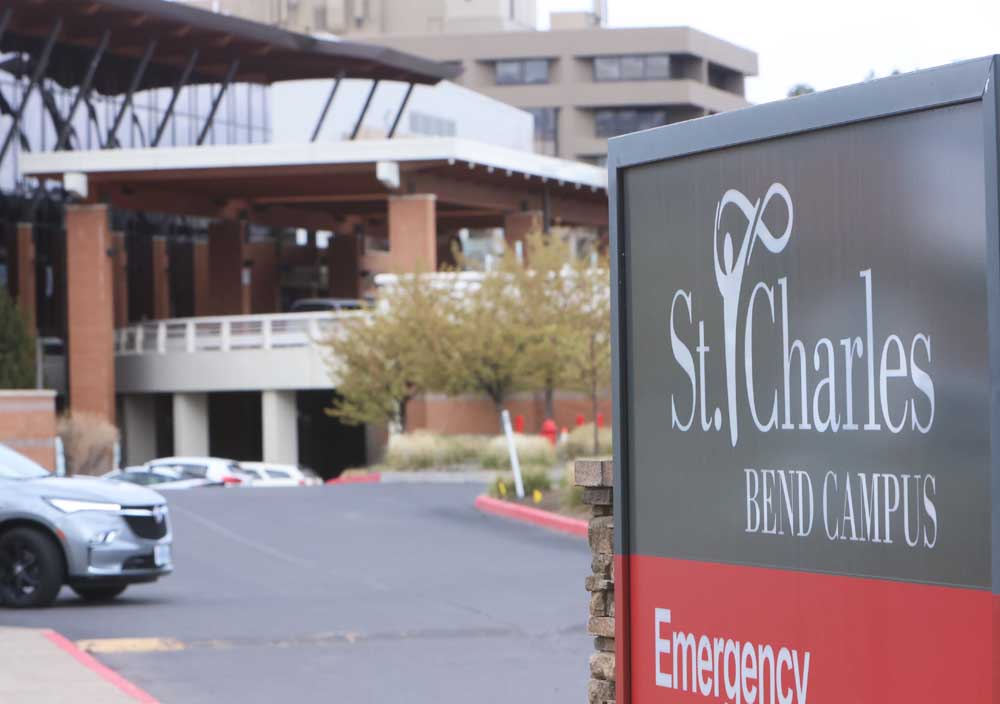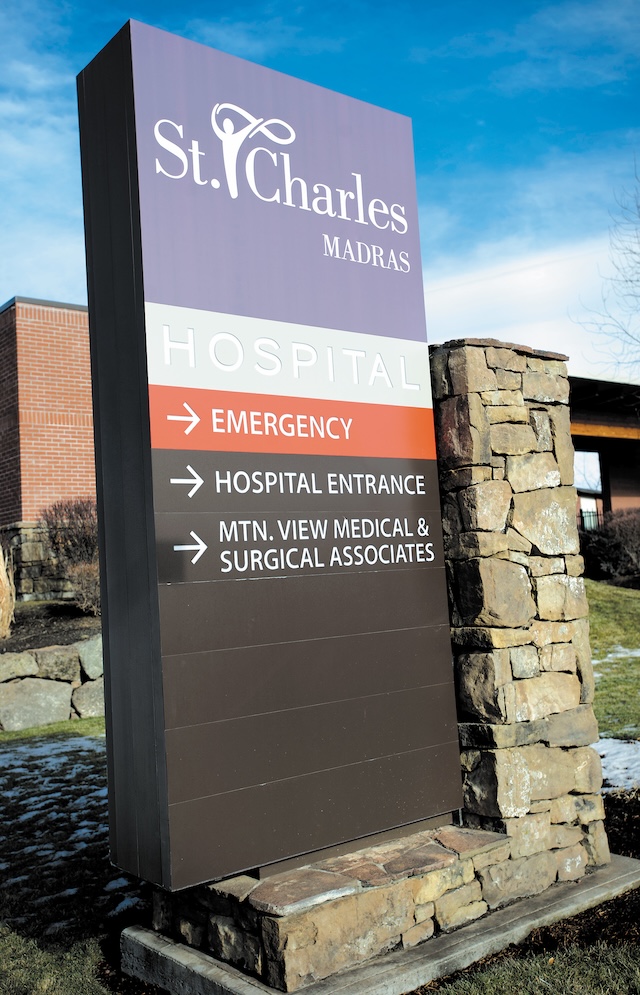St. Charles implements approved safe staffing plans, except in ICU
Published 5:30 am Tuesday, July 2, 2024

- St. Charles Bend.
In all but one hospital department of St. Charles Health System, a new state safe staffing level plan — designed to protect patients and keep nurses from burning out — has been put in place.
The one department without an updated safe staffing plan is the intensive care unit at St. Charles Bend. The Oregon Nurses Association, which represents about 1,000 nurses in Bend, Redmond and Prineville, says the health system has changed the safe staffing plan even though it has not been agreed to by both nurses and hospital administrators, said Keven Mealy, Oregon Nurses Association spokesman.
Trending
The key change involves the use of certified nursing assistants.
On March 30, the health system eliminated the certified nursing assistants positions in the intensive care unit and added one floating registered nurse, said Stacy Youngs, St. Charles Bend chief nursing officer.
The safe staffing plan in place for the intensive care unit calls for certified nursing assistants to help registered nurses, Mealy said.
Since the hospital system has laid off the certified nursing assistants, it has been out of compliance with the staffing plan previously approved by nurses and the health system, said Jason Herring, Oregon Nurses Association labor representative for St. Charles Bend. Under the new safe staffing law, nurses and the health system must agree on a plan that meets the new guidelines approved by lawmakers last year.
“We have filed a complaint with the Oregon Health Authority,” Herring said. “We’re attempting to protect the caregiver and patient safety. Studies show that the more time a nurse can spend with a patient, the better the patient outcome.
“Nurses are the backbone of the health care system and have great latitude in the care they provide under Oregon law.”
Trending
While the changes to the safe staffing plan are being addressed, the hospital has approved and sent to the Oregon Health Authority plans for 19 other departments in Bend, Youngs said.
“We are continuing to work collaboratively in our staffing committees to implement the ratios within the law,” Youngs said. “Our organization recognizes the critical role that adequate nurse staffing plays in delivering high-quality patient care.”
The safe staffing law, which was approved by lawmakers in 2023, called for a June 1 deadline of safe staffing levels that varied for each department. St. Charles had already integrated its plan that called for a one or two patients to one registered nurse in the intensive care unit, depending on how severe the patient illness, Youngs said. The new safe staffing law also requires that hospitals maintain this ratio consistently throughout a 24-hour period, including breaks.
Other hospitals lagging too
Across Oregon, St. Charles isn’t the only hospital to lag on establishing revised safe staffing plans, said Mealy. Several hospitals have either disregarded staffing plans agreed to by nurses and management, or implemented new plans without a review and an agreement, Mealy said.
“What’s happening is that some health systems are not taking the time to come up with a new agreed plan and the hospitals are setting up their own plan,” Mealy said. “The way the law works is if you don’t have a new plan in place by June 1, then the old plan remains in effect until a new one is agreed to. This circumvents the law completely.”
State lawmakers approved, with nods from stakeholders, safe staffing measures in 2023. The safe staffing ratios call for:
• One registered nurse to one patient in the emergency department, active labor and delivery and in the operating room
• One registered nurse to two patients in the intensive care unit, inactive labor and delivery and post-anesthesia care
• One registered nurse for three patients in the intermediate care unit
• One registered nurse for every four patients in the nontrauma emergency department, postpartum, medical surgical oncology and telemetry
• One certified nursing assistant for every seven patients during the day shift and one certified nursing assistant for every 11 patients during the night shift.
The ratios are meant to be maintained even during nurses’ breaks, according to the law.
“As the summer tourist season begins in earnest in Central Oregon, our population can nearly double every weekend,” Mealy said. “While patient census and staffing levels of the ICU remain fluid, nurses regularly report not taking lunches or breaks because they feel it would be unsafe for patients for them to do so.””
The safe staffing law requires health systems to have nurses covered for breaks and lunches. At St. Charles, Youngs said, that was happening well before the law took effect and will continue. The pre-approved safe staffing plans must be reviewed annually.
If a hospital system fails to provide breaks for nurses, the state can impose a $200 fine for every missed break when a complaint has been filed.
Complaints filed
The health authority has received 712 complaints statewide since the law took effect last month. One complaint against St. Charles Health System was filed in October 2023 against the health system, but in May was determined didn’t violate the nurse staffing plan, according to documents on file with the Oregon Health Authority.
Filling vacant nursing positions has really helped the hospital close the gap on safe staffing levels, Youngs said.
The health system believes it can reach an agreement for safe staffing levels with nurses in the intensive care unit by the end of July. With nurses working 12-hour shifts, it has made it difficult to schedule meetings with front-line nurses and staff, Youngs said.
Mealy said St. Charles’ decision to remove the certified nursing assistants in the intensive care unit, for activities like taking a patient to radiology for a scan, may require two or three nurses now. Previously a registered nurse was accompanied by certified nursing assistants to transport a patient. Many of the basic care tasks used to be done with the assistance of the certified nursing assistants, Mealy said.
“Without the CNAs, nurses are being asked to do more work with less help,” Mealy said. “Nurses and health care professionals in the ICU provide the highest level of care to the most critically ill patients and give them the best possible chance of recovery.”








